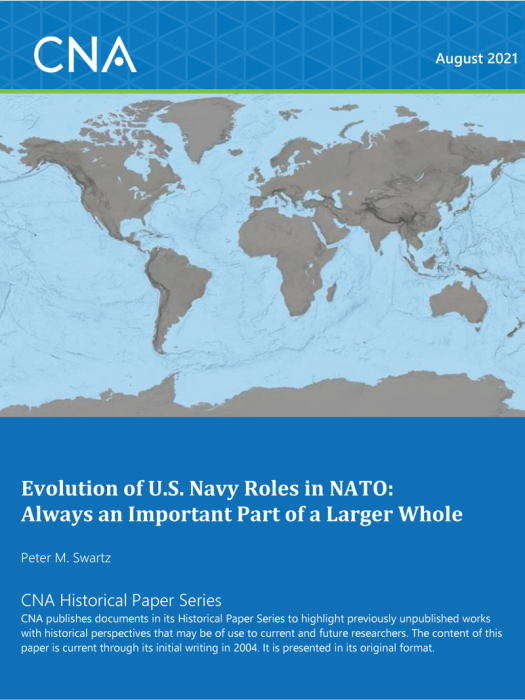Overview
This study:
- Traces US Navy roles in the North Atlantic Treaty Organization(NATO) since 1949.
- Places US Navy-NATO relations in larger global and historical con-texts.
- Draws conclusions regarding those roles and relations.
- Provides a guide to much of the literature on the Navy and NATO.
The study is designed to help:
- Provide perspective and context for present and future decision-making as both NATO and the US Navy continue to evolve.
- Foster further advanced research and analysis in the field.
- Inform European, Canadian, and other foreign readers, as well asAmericans.
Conclusions
Among the study’s major conclusions are the following:
On the US Navy and Europe
- The US Navy has been deployed globally and forward, almost frombirth, to further US diplomatic, military, and economic policies.Through much—but not all—of its history, the United States haskept permanent forward deployed naval forces in European waters.
- At the beginning of the Cold War and on a few occasions since,the Mediterranean was the most important forward theater of USnaval planning and operations. During most of the Cold War,however, the Mediterranean shared pride of place with the westernPacific as the locus of significant permanent US Navy combat-credible forward presence. Especially toward the end of the ColdWar, the Indian Ocean and Norwegian Sea also becameparticularly salient.
- Since the end of the Cold War, however, neither the Mediterraneannor the North Atlantic has kept its former priority. Nevertheless,many factors should continue to yield a mix of permanent and in-termittent US naval presence in European waters.
- Throughout its history, the US Navy has periodically—and easily—surge deployed naval forces to European waters, either as inde-pendent force packages or reinforcements. Under the new Fleet Response Plan (FRP), US Navy surges can be expected to in-crease.
CNA Historical Paper Sereis
CNA publishes documents in its Historical Paper Series to highlight previously unpublished works with historical perspectives that may be of use to current and future researchers. The content of this paper is current through its initial writing in 1999. It is presented in its original format.
Approved for public release.
Details
- Pages: 130
- Document Number: DIM-2019-U-022388-1Rev
- Publication Date: 8/6/2021
